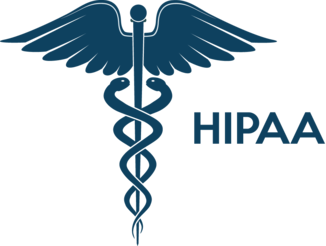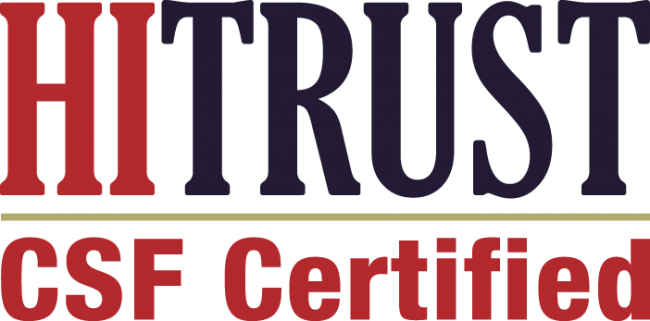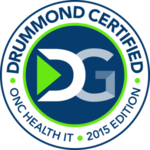The landscape of mental healthcare in America is undergoing a significant transformation. With mental health conditions affecting millions of Americans and contributing to an estimated economic burden exceeding $200 billion annually, the need for innovative care delivery models has never been more critical. The Psychiatric Collaborative Care Model (CoCM) represents a evidence-based approach to integrating behavioral health into primary care settings, and Medicare’s coverage of these services since 2017 has opened new pathways for comprehensive patient care.
However, navigating the complex requirements of Medicare psychiatric CoCM compliance while delivering high-quality care presents substantial challenges for healthcare organizations. This is where HealthViewX emerges as a strategic partner, offering technology-enabled solutions that streamline compliance, enhance care coordination, and improve patient outcomes.
Understanding the Psychiatric Collaborative Care Model
The Psychiatric Collaborative Care Model is a systematic approach to treating behavioral health conditions in primary care settings. This model integrates behavioral health services into routine primary care through a team-based approach that typically includes:
- Primary Care Providers (PCPs) who continue to oversee the patient’s overall care
- Behavioral Health Care Managers who coordinate care, track outcomes, and provide brief interventions
- Psychiatric Consultants who provide expert guidance and treatment recommendations
Research has consistently demonstrated the effectiveness of CoCM. Studies show that patients receiving collaborative care are:
- Twice as likely to experience a 50% or greater improvement in depression symptoms compared to usual care
- More likely to adhere to treatment plans
- Less likely to require emergency department visits or hospitalizations for mental health crises
The model has shown particular promise for managing depression, anxiety, and other common mental health conditions in populations that might otherwise face barriers to accessing specialty mental healthcare.
Medicare’s CoCM Billing Codes: A Compliance Framework
Medicare introduced specific billing codes for psychiatric CoCM services in January 2017, recognizing the value of integrated behavioral health care. The primary codes include:
CPT 99492 – Initial psychiatric CoCM (first 70 minutes in the first calendar month) CPT 99493 – Subsequent psychiatric CoCM (each additional 60 minutes in the first month) CPT 99494 – Initial psychiatric CoCM (first 60 minutes in subsequent months) CPT 99484 – Care management for behavioral health conditions (first 20 minutes)
Key Compliance Requirements
To bill Medicare for CoCM services, healthcare organizations must meet stringent documentation and operational requirements:
- Time Tracking: Accurate documentation of all time spent on care management activities by qualified personnel
- Treatment Plan Documentation: Evidence of individualized, measurement-based care plans
- Regular Psychiatric Consultation: Documented systematic psychiatric consultation and supervision
- Patient Consent: Written informed consent for CoCM services
- Care Coordination Documentation: Detailed records of care coordination activities, communications, and interventions
- Outcome Measurement: Regular administration and documentation of validated assessment tools (PHQ-9, GAD-7, etc.)
- Registry Management: Maintenance of a psychiatric case registry for tracking all patients receiving CoCM services
The complexity of these requirements creates significant administrative burden, with many practices struggling to capture all billable time and maintain compliant documentation.
The Compliance Challenge: Why Healthcare Organizations Struggle
Despite the proven benefits of CoCM and available Medicare reimbursement, adoption rates remain lower than desired. A 2022 survey found that fewer than 15% of primary care practices had implemented formal collaborative care programs. Several barriers contribute to this gap:
Documentation Burden
Care managers often spend 30-40% of their time on documentation rather than direct patient care. The need to track time across multiple activities, document every interaction, and maintain detailed registries creates substantial administrative overhead.
Revenue Leakage
Without robust tracking systems, healthcare organizations frequently under-bill for CoCM services. Studies suggest that practices may miss capturing up to 40% of billable time due to inadequate documentation systems, resulting in significant revenue loss.
Workflow Integration Challenges
Implementing CoCM requires coordinating across multiple providers, systems, and disciplines. Many electronic health records (EHRs) lack purpose-built functionality for CoCM workflows, forcing care teams to use workarounds that are inefficient and error-prone.
Compliance Risks
Inadequate documentation or failure to meet Medicare’s specific requirements can result in claim denials, audits, and potential penalties. The complexity of compliance requirements demands specialized expertise and systems.
Staff Burnout
The administrative burden of manual tracking and documentation contributes to care manager burnout, with behavioral health workforce shortages already at crisis levels. The Health Resources and Services Administration projects a shortage of more than 10,000 psychiatrists by 2025.
HealthViewX: A Comprehensive CoCM Compliance Solution
HealthViewX addresses these challenges through a purpose-built platform designed specifically for psychiatric collaborative care management. The solution combines care coordination technology, automated workflows, and compliance-focused documentation to support healthcare organizations in delivering high-quality CoCM services while maximizing reimbursement.
Automated Time Tracking and Documentation
HealthViewX’s platform automatically captures and categorizes all care management activities, ensuring that billable time is accurately tracked without adding burden to care managers. The system:
- Records time spent on patient outreach, care coordination, and documentation
- Automatically aggregates time across the care team
- Provides real-time visibility into billing thresholds
- Generates compliant documentation that meets Medicare requirements
- Alerts care teams when time thresholds for billing are approaching
This automation can increase captured billable time by 25-35%, directly improving practice revenue while reducing documentation burden.
Integrated Psychiatric Registry
At the heart of CoCM compliance is the psychiatric case registry, a comprehensive tracking system for all patients enrolled in collaborative care. HealthViewX provides:
- A dynamic registry that automatically updates with patient data
- Risk stratification and population health analytics
- Treatment response tracking with validated assessment tools
- Automated reminders for follow-up assessments and consultations
- Comprehensive reporting for quality improvement and compliance audits
The integrated registry ensures that no patient falls through the cracks and that all Medicare documentation requirements are consistently met.
Measurement-Based Care Tools
HealthViewX streamlines the administration and tracking of standardized assessment instruments such as the PHQ-9 (Patient Health Questionnaire-9) for depression and GAD-7 (Generalized Anxiety Disorder-7) for anxiety. The platform:
- Delivers assessments via patient portal, mobile app, or during encounters
- Automatically scores and trends results over time
- Flags treatment-resistant cases requiring psychiatric consultation
- Integrates assessment data into the patient’s care plan
- Generates visual dashboards showing treatment response across populations
Regular measurement is essential for both clinical effectiveness and Medicare compliance, and HealthViewX makes this process seamless.
Care Team Collaboration and Communication
Effective CoCM requires coordinated communication among primary care providers, behavioral health care managers, and psychiatric consultants. HealthViewX facilitates this through:
- Secure messaging between care team members
- Structured consultation workflows with psychiatric experts
- Automated escalation protocols for high-risk patients
- Care plan sharing and collaborative documentation
- Integration with existing EHR systems to ensure continuity
By streamlining communication, HealthViewX helps care teams function more efficiently while ensuring that psychiatric consultation requirements are met and documented.
Patient Engagement Tools
Patient engagement is critical to successful behavioral health outcomes. HealthViewX enhances engagement through:
- Patient portals with educational resources
- Automated appointment reminders and follow-up prompts
- Secure messaging with care managers
- Self-monitoring tools and assessment completion
- Progress tracking and goal-setting features
Engaged patients are more likely to adhere to treatment plans, attend appointments, and achieve positive outcomes, all of which contribute to both clinical success and practice sustainability.
Compliance Monitoring and Reporting
HealthViewX provides real-time compliance dashboards that give healthcare leaders visibility into:
- Documentation completeness for each patient
- Billing readiness by CPT code
- Time tracking summaries
- Consultation frequency and documentation
- Quality metrics and outcome measures
- Audit-ready reports that demonstrate Medicare compliance
This proactive compliance monitoring helps organizations identify and address gaps before they result in denied claims or audit findings.
Measurable Impact: The HealthViewX Difference
Healthcare organizations implementing HealthViewX for CoCM management report significant improvements across multiple dimensions:
Financial Performance
- 30-40% increase in CoCM billing capture through better time tracking
- Reduction in claim denials due to improved documentation quality
- Faster reimbursement cycles with cleaner claims submission
- Enhanced practice sustainability through optimized revenue streams
Clinical Outcomes
- Higher treatment response rates through consistent measurement-based care
- Reduced psychiatric hospitalizations among enrolled patients
- Improved patient satisfaction with coordinated care approaches
- Better management of complex patients with comorbid conditions
Operational Efficiency
- 25-35% reduction in administrative time for care managers
- Improved care manager satisfaction and reduced burnout
- Streamlined workflows that integrate with existing systems
- Scalability to expand CoCM programs across multiple sites
Quality and Compliance
- 100% documentation compliance for Medicare requirements
- Audit-ready reporting available on demand
- Reduced compliance risk through systematic processes
- Improved quality metrics for value-based care programs
Addressing the Mental Health Crisis Through Scalable Solutions
The mental health crisis in America demands scalable, sustainable solutions. According to the National Institute of Mental Health:
- Nearly one in five adults experiences mental illness each year (52.9 million people in 2020)
- Major depression affects approximately 21 million American adults annually
- Anxiety disorders are the most common mental illness, affecting 40 million adults
- Yet only 43% of individuals with mental illness received treatment in 2020
Primary care settings are where most Americans seek health services, making them ideal venues for mental health intervention. However, primary care providers often lack the specialized support and systems needed to effectively manage behavioral health conditions.
The CoCM model addresses this gap by bringing psychiatric expertise into primary care through systematic consultation and support. HealthViewX makes this model operationally viable by:
- Reducing the technology and workflow barriers to CoCM implementation
- Ensuring financial sustainability through maximized reimbursement
- Supporting care teams with efficient tools that reduce burden
- Enabling scalability so more patients can access integrated care
Implementation and Support: A Partnership Approach
HealthViewX understands that technology alone is not sufficient—successful CoCM implementation requires organizational change, workflow redesign, and ongoing support. The HealthViewX partnership model includes:
Strategic Planning
Working with healthcare organizations to design CoCM programs that align with their specific patient populations, workforce capabilities, and strategic goals.
Implementation Support
Providing comprehensive onboarding, training, and workflow optimization to ensure successful platform adoption and minimal disruption to existing operations.
Ongoing Optimization
Continuous monitoring of program performance with regular reviews, best practice sharing, and system enhancements to drive improved outcomes.
Regulatory Updates
Staying current with evolving Medicare policies and billing requirements, ensuring that the platform and organizational processes remain compliant as regulations change.
The Future of Integrated Behavioral Healthcare
As healthcare continues to shift toward value-based care models, integrated behavioral health services will become increasingly important. Future trends include:
- Expanded coverage for CoCM and related services beyond Medicare
- Integration with social determinants of health screening and intervention
- Artificial intelligence applications for risk prediction and treatment optimization
- Telehealth integration for expanded access to psychiatric consultation
- Population health management approaches that identify at-risk individuals before crisis
HealthViewX is positioned at the forefront of these trends, continuously evolving its platform to support the future of integrated care while maintaining unwavering focus on compliance and quality.
Conclusion: Partnership for Better Outcomes
The Psychiatric Collaborative Care Model represents one of the most evidence-based, effective approaches to addressing the mental health needs of primary care populations. Medicare’s support for CoCM through dedicated billing codes creates financial viability for this model. However, the operational complexity of CoCM implementation and compliance requirements present significant barriers for many healthcare organizations.
HealthViewX serves as a true partner in overcoming these barriers, providing not just technology but a comprehensive solution that addresses the full spectrum of CoCM needs—from patient engagement and care coordination to documentation, compliance, and billing optimization.
For healthcare organizations committed to improving behavioral health outcomes while ensuring operational excellence and regulatory compliance, HealthViewX offers a proven pathway to success. By automating administrative burden, ensuring compliant documentation, maximizing reimbursement, and supporting care team collaboration, HealthViewX enables healthcare providers to focus on what matters most: delivering high-quality, patient-centered care.
In an era where mental health has rightfully taken center stage in national healthcare priorities, the combination of the CoCM model and HealthViewX technology creates sustainable pathways to expand access, improve outcomes, and build financially viable integrated behavioral health programs. The result is better care for patients, better work environments for providers, and better financial performance for healthcare organizations, a true win-win-win in healthcare transformation.
Ready to transform your behavioral health services and ensure Medicare CoCM compliance? Partner with HealthViewX to build a sustainable, scalable collaborative care program that delivers measurable results for your patients, your providers, and your organization.






